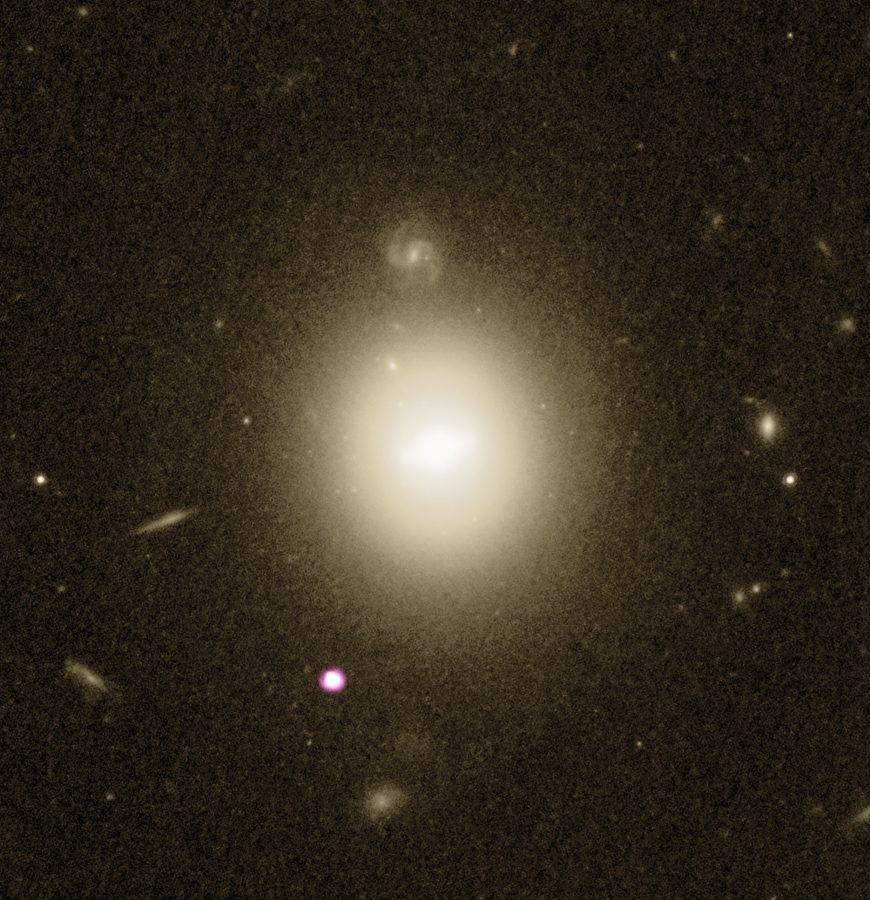UA professor helps discover black hole
This is the best-ever candidate for a very rare and elusive type of cosmic phenomenon: a so-called intermediate-mass black hole in the process of tearing apart and feasting on a nearby star. Photo courtesy of the European Space Agency
June 19, 2018
Jimmy Irwin of The University of Alabama’s Department of Physics and Astronomy served on an international team of researchers who recently discovered a rare black hole.
Irwin, an associate professor of astronomy, helped determine a more proficient way to identify black holes, specifically mid-sized black holes such as the one the team found.
“It’s a class of black holes that we don’t have a lot of data evidence they exist,” Irwin said. “If we understand how intermediate-mass black holes form, we can understand how large black holes form.”
Irwin and his team’s research was published in Nature.com’s Nature Astronomy journal on June 18, 2018. Irwin served as an adviser for the team. They used data from the XNM-Newton X-ray space observatory, as well as NASA’s Chandra X-ray Observatory and Swift X-ray Telescope.
Using the Swift Telescope, the team was able to observe a noticeably large amount of radiation in a distant galaxy. It was deduced that the radiation was the effect of a star that was absorbed by a black hole.
Dacheng Lin, a former post-doctoral candidate who researched under Irwin and served as lead scientist of the team, said the newfound black hole is especially important because of its clarity and prominence, something many scientists have yet to find.
“A few [black hole] candidates have been found, but on the whole they’re extremely rare and very sought after,” Lin said. “This is the best intermediate black hole candidate observed so far.”
The black hole that Irwin’s team found is classified as an intermediate-mass black hole, which is smaller and less substantial than a supermassive black hole. These masses have the potential to grow as they accumulate more stars, planets and other cosmic matter, but evidence of this happening is scarce.
Irwin’s team relied on their findings, plus data from the three observatories and telescopes, to figure out the intricacies of the black hole. The data suggests that a star began to fall into the black hole around October 2003. The collision triggered a burst of massive amounts of energy and radiation, which was detected by the telescopes and recorded over the next decade, according to Irwin.
The team said the black hole, having an approximate mass of 50,000 suns, disrupted the star’s fall and destroyed it. This evidence is abnormal for intermediate-mass black holes, which may mean there are many more dormant black holes of this kind out in the universe, waiting to be set off.





















